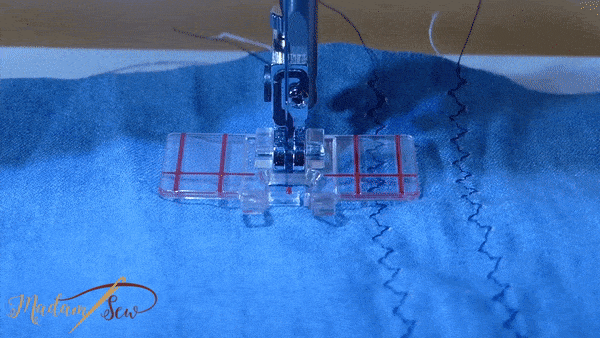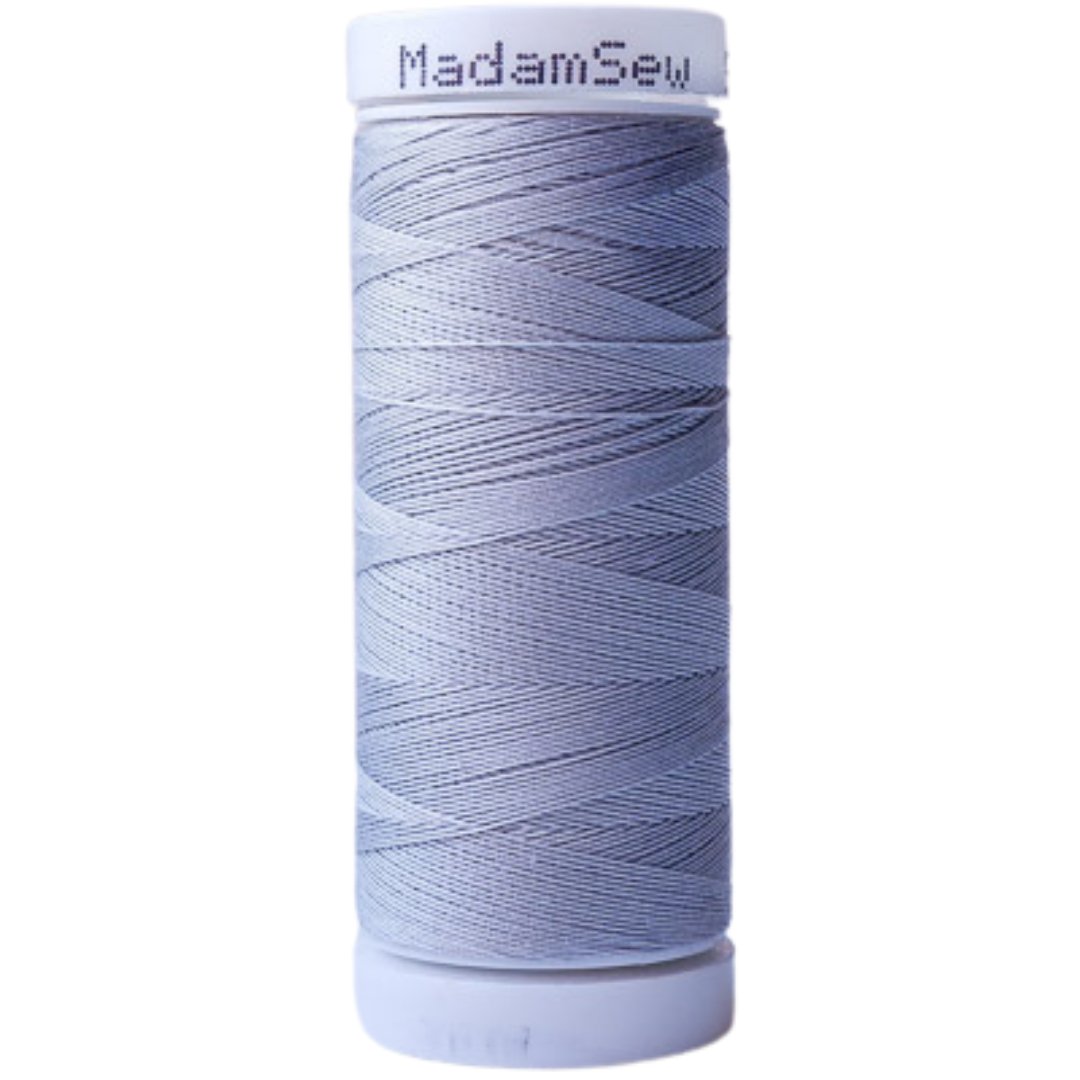How to Make Beautiful Zero-Waste Napkins
In this tutorial you’ll learn how to sew cloth napkins with mitered corners and decorative stitches. Mitered corners is a sewing technique that any sewist and quilter should master. Making napkins is very beginner-proof and a perfect way to practice sewing mitered corners.
I’ve been trying to take steps towards less waste in my household, especially less plastic waste. My next step is replacing paper napkins and disposable towels with cloth napkins. Cloth napkins have a reputation for being a little fussy. To make them a success as a zero-waste alternative, they need to be as easy as the paper ones. So, I like them to be pretty, casual, and practical—not too big, colors that fit together, easily washable, and no need for ironing. I found several cloth napkin patterns online and decided to make my own version with mitered corners.
Mitered corners reduce the excess fabric at the corners when hemming two edges that meet, and they make an elegant, neat, and tidy finish. Perfect!
I used cotton fabric for these DIY cloth napkins, but you can use anything you’d like–terry, linen, microfiber, etc. If you use plain fabrics, it’s nice to decorate them with rows of decorative stitches. I used my regular sewing machine (my Pfaff Smarter 140s) and a border guide foot to get nicely spaced parallel rows. Check it out!
Materials and Supplies Needed for Cloth Napkins
-
Matching cotton fabrics… some fat quarters can do the trick. If you want the official napkin size, you can use 18” x 18” inch for one napkin or even 20” X 20”. Mine are a lot smaller.
-
Matching thread for the hems
-
Contrasting threads for the decorations. If you use very fine embroidery thread, like I did, you’ll need a fine needle as well.
-
A rotary cutter, ruler and mat, and scissors
-
A fabric marker
-
Pins and sewing clips
-
A Sewing machine
-
Big help for this job: a border guide foot & an edge joining foot
You don’t really need a cloth napkin pattern. You can simply cut out the size you want, add decoration, and hem the edges. I’ve outlined the instructions below. I hope you find them useful in making your own DIY cloth napkins.
1. Cut the Fabric
Cut some rectangular or square pieces out of your fabrics to create your napkin set.
13”, 18”, or 20” squares are common sizes, but I also cut smaller ones for my kids and some rectangular pieces as well.
Do whatever suits you best!
2. Add Decorations and Embellishments
At first, it was difficult to get the decorative stitches right with my light weight polyester machine embroidery thread (135dtex/2). The only good advice I can give you at the moment is to test your stitches on some scraps with your own machine and specific thread until you get the stitches right. I changed my needle to a really thin one and from then on it went better.
I used the “bridging stitch”, which is not a decorative stitch, really. It’s for overcasting, sewing on elastic, darning tears, and inserting patches (my machine's manual says), but I have never used it before.
I also tried the ‘federstitch’ and ‘open scallop’ with golden thread on black fabric.
Put your needle close to the edge, but don’t start your rows too close to the raw edges because you still have to hem the sides (1”). Now stitch one row.
If you want parallel rows, I advise you to use a border guide foot for the next rows.
The border guide foot is a clear foot. It has wings with red guides that help you make perfect rows of decorative stitching. You can sew without measuring and marking. The horizontal line matches the needle drop point and the small red lines mark the design's center.

The border guide foot is a snap-on foot. You just snap it on your presser foot holder. If you have a Pfaff, a Husqvarna Viking (some models), you’ll need the low shank snap-on adapter. If you have a Bernina, you’ll need the Bernina adapter + the low shank snap-on adapter. If you want to know more about shanks and presser feet, you can go to our blog that explains how to identify a low-shank sewing machine.
So, as you sew, watch the guide lines, not the needle to keep your fabric going straight.
Your previous line of stitching is between the two vertical red lines, so keep your eyes on the stitching between the red lines.
3. Hem the Edges and Make Mitered Corners
1. Press all raw edges 1/2" to the wrong side of your fabric. This is half your hem allowance. Press the same hem amount (1/2”) again. This is the second fold. At the corners it will be bulky.
2. Unfold the second fold at one corner. Fold the corner in towards the wrong side so that the creases line up with those from the second fold. The two legs of the corner will measure 1 inch. Unfold the corner and trace the crease with a fabric marker. I used my heat erasable gel pen.
3. Fold the corner into a point, right sides together, making sure that the ends of the drawn lines meet. Pin the corner into place.
4. Now stitch along the marked line or the crease, backstitching at beginning and end. Cut off the excess and clip the tip of the corner off.
5. Turn the corner right side out and make sure the tip is pointy.
6. Press and pin down the second fold.
Repeat this for the three other corners.
7. Now edge stitch the second fold around all 4 sides, backstitching at the beginning and end.
I used my edge joining foot for this edge stitch. Put your needle off center (left or right depending on where you position the edge joining foot and where you want your stitches) and put the guide next to your hem. In the corners you have to push the guide up the fold and stitch until you reach the diagonal crease. Then, put your needle in the down position, turn your fabric and continue stitching down the other side of the napkin.
After sewing the hem all the way around, your napkin is ready!
Now, repeat for all the remaining cut squares and you’ll end up with a whole set of DIY cloth napkins! Nature will be grateful! I will start using my set today and I hope that we will use less disposable towels and napkins at home.
If you want to read more about mitered corners, in this blog about binding a quilt, Ana explains how to sew a mitered corner with the edge-joining foot. And do you already know the Hot Hem Ruler? It is a great ironing ruler that makes sewing mitered corners very easy. We didn’t have this tool in the MadamSew.com webstore at the time of publication but should I redo this post, I would definitely use the Hot Hem Ruler.
I’m really curious to hear if you are making your own napkins and to see what napkins you are sewing for your family or friends! Are you using hems and mitered corners to finish the edges? Send me your pictures and we can show them off on our Facebook or Instagram page or post them yourself in our lively Facebook Sewing Group or with the hashtag MadamSew on Instagram.
If you have any more questions or hesitations about this cloth napkin post, just send me an email an@madamsew.com

















